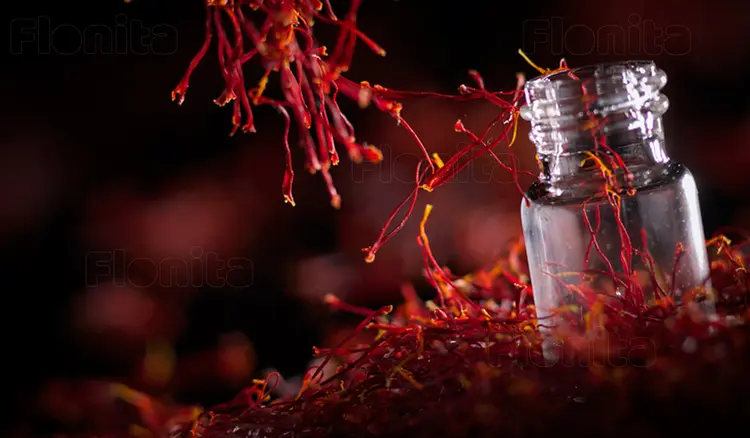Iran, The Biggest Producer Of Saffron In The World
We alone produce over 90% of all Saffron worldwide, which is exported to more than 80% of its main destinations, such as the UAE, Spain, and China. Iran is well-known as the leading Saffron producer in the world and exported $244.22 million of Saffron in 2022-23, according to the Agriculture Ministry's fiscal 2023, and Statista website reported.
However, its share of Iran in the global trade of Saffron is disproportionately low because many customers of Persian Saffron purchase it in bulk volume and re-export after repackaging it, selling them at significantly higher prices to third countries.
Cultivating Saffron has been known as a business in Iran for centuries, and its usage come back to 3500 years ago in ancient Persia; it was always highly prized and used in special ceremonies and celebrations like the old Persian New Year, Nowruz. Achaemenes used Saffron as a spice, fragrance, and dye. Scholars believe Saffron may have originated from a wider geographical area. They think that this area included Greece, Asia Minor, and Persia and later spread eastward to India and China. Ancient Persians introduced and sold Saffron to Greeks, Romans, Chinese, and Arabs. Later on, they cultivated Saffron in some regions of Europe and North Africa. Saffron still figures prominently in Iranian culture, and Iranians widely apply it in their diet.
Saffron (Crocus sativus) is a bulbous perennial herb that does not grow from seeds; the underground bulbs divide to produce new plants. Flowers emerge in autumn; the outstanding feature of the purple-colored flower is its three red stigmas 25 – 30 mm long, which hang over the petals.
Saffron harvest season begins in early September and lasts for about two weeks. During this time, people head to the fields, covered with eye-catching purple flowers, before sunrise and before the flowers bloom. Harvesting the flowers and separating and drying the stigmas is a sensitive and labor-intensive process. It takes 170 flowers to produce only one gram of Saffron, which is why Saffron is the most expensive spice in the world.
Also, several ancient cultures have admired Saffron for its miraculous medicinal properties in traditional medicine. Ancient texts on Ayurveda mention herbs as an aphrodisiac, which probably explains the Kesar milk or saffron milk (Saffron with milk) part of the wedding night ritual. “The healing properties of Saffron were described in The Canon of Medicine, the encyclopedia of medicine compiled by Avicenna (Ibn Sina), the Persian polymath, in 1025”.
The Canon of Medicine represented an overview of medical knowledge in the world as the oldest country, which also incorporated earlier traditions of Greco-Roman, Persian, Chinese, and Indian medicine. As described by Avicenna, Saffron's therapeutic properties included its effectiveness as an antidepressant, hypnotic, anti-inflammatory, hepatoprotective, bronchodilatory, aphrodisiac, inducer of labor, emmenagogue, and others. Scientists have discovered most of these effects in fresh pharmacology sciences. The pharmacological findings on Saffron and its constituents, including Crocin, crocetin, and safranal, are similar to those in Avicenna's work.
Saffron is a spring of diverse health benefits and disease-prevention properties. Even more impressive is that Saffron has no harmful side effects, if consumed in the right amount, unlike most pharmaceutical products promoted and sold by corporate giants.
Its beneficial effects include the following:
Antidepressants, antianxiety, aphrodisiac, antispasmodic, anticonvulsant, anti-neuropathic pain, and anti-gastric Antimicrobial, antibacterial, antifungal, antiseptic, anti-inflammatory, antioxidant, antinociceptive, antigenotoxic, antimutagenic, and antiparkinsonian Reduction of coronary artery disease by lowering blood cholesterol and preventing blood vessels and arteries from clogging, Reduces blood pressure, Enhancement of cognitive functions and memory in Alzheimer's disease, Improves ocular blood flow and retinal function, and treats age-related macular degeneration. An anti-carcinogenic agent selectively kills cancer cells or suppresses their growth while leaving normal cells unharmed. Studies have found that Crocin, the main antioxidant in Saffron, may make cancer cells more susceptible to chemotherapy drugs; anti-hyperglycemic and pancreas-protective properties: lowers blood sugar and increases insulin sensitivity.
The labor of cultivating and harvesting, Saffron is the most precious spice in the world, which is why people call it 'Red Gold. The current USD to Rial exchange rate in Iran has created a golden opportunity for travelers to purchase pure and exquisite Iranian Saffron for just fifty cents per gram! Considering all the wide-ranging health benefits of Saffron compared to the cost of medications and complex medical treatments, the Iranian saffron price is an incredible deal. It is nice to safely take Saffron daily as a tea or in capsules, up to three grams per month. You can store Saffron for up to two years in a dry place away from light for maximum potency.
Edited by Mrs. Khamooshi. MHamed Biglari
Assistant Professor of Environmental Health Engineering in Gonabad University of Medical Sciences, Razavi Khorasan, Iran




Your Comment
Required fields*